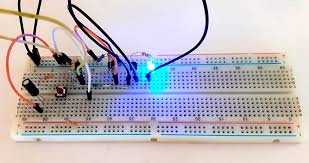
Soft switching is a technique used in power electronics to reduce the switching losses in power semiconductor devices, such as MOSFETs, IGBTs, and BJTs, when they are used to control the flow of electrical power.
In conventional hard switching, the semiconductor devices are turned on and off at high speeds, resulting in significant power loss due to the high voltage spikes and current surges that occur during the switching transitions. This can lead to reduced efficiency and increased heat generation in the power converter.
In contrast, soft switching techniques aim to reduce these switching losses by manipulating the voltage and current waveforms in a way that minimizes the voltage and current spikes during the switching transitions. This is typically achieved by using resonant circuits that store and release energy during the switching cycle, or by using a combination of active and passive components to shape the voltage and current waveforms.
Soft switching can improve the efficiency and performance of power converters, particularly in high-power applications where reducing switching losses is critical. However, it can also increase the complexity and cost of the power converter design, and requires careful control and optimization of the switching parameters to achieve optimal performance.
Soft switching is commonly used in a variety of power electronics applications, including DC-DC converters, AC-DC converters, and inverters. One of the most popular soft switching techniques is called resonant switching, which involves using a resonant circuit, such as a series or parallel LC circuit, to store and release energy during the switching transitions. By carefully designing the resonant circuit and controlling the switching frequency, the voltage and current spikes can be reduced, resulting in lower switching losses and improved efficiency.
Another soft switching technique is called quasi-resonant switching, which combines resonant and hard switching techniques to achieve some of the benefits of both. In quasi-resonant switching, the semiconductor device is turned on at the zero voltage point of the AC waveform, which reduces the voltage stress on the device and minimizes switching losses. The device is then turned off using a hard switching technique to ensure fast turn-off times.
Soft switching is also used in high-frequency power electronics applications, where conventional hard switching techniques may not be feasible due to the high switching losses and thermal stress on the power semiconductor devices. In these applications, soft switching can significantly improve the efficiency and reliability of the power converter.
However, the implementation of soft switching requires careful consideration of the trade-offs between efficiency, complexity, and cost. Soft switching circuits typically require additional components, such as resonant circuits or snubber circuits, which can increase the complexity and cost of the power converter. Furthermore, the design and optimization of soft switching circuits can be challenging and may require specialized knowledge and tools.
In summary, soft switching is a powerful technique for reducing switching losses in power electronics applications, but it requires careful design and optimization to achieve optimal performance and efficiency.

